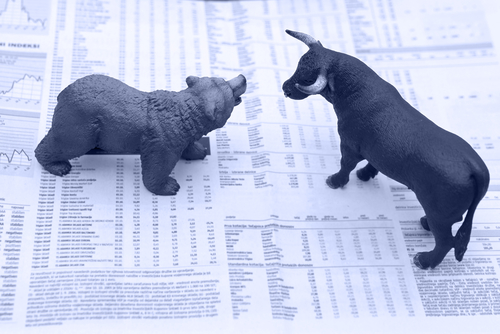Trading volumes have already begun to surge for bonds across Asia, as the fast spread of the coronavirus around the world prompts investors to dump equities for the safety of fixed income securities.
Asia-Pacific credit trading volumes spiked more than 50% this week with a 208% rise in year-on-year investment-grade credit transactions through 2020 so far, according to Citibank.
These figures illustrate two important insights to what we might expect to happen in Australia.
One: the speed and breadth of investors rushing into the safer end of fixed income markets (e.g. bonds).
And, two: a potential boost for the banks after a long spell of low volatility and lacklustre volumes on the fixed-income market squeezed profits.
However, I would be hesitant to expect this would have significant impact the share price for the likes of Commonwealth Bank of Australia [ASX:CBA] and National Australia Bank Ltd [ASX:NAB] in the immediate future.
RBA sets unconventional policy
Well before the threat of the coronavirus hit Australian markets, the RBA had already toyed with the idea of buying government bonds or other financial assets in order to inject liquidity directly into the economy — known as quantitative easing (QE).
Yesterday we got a taste of what that actually might look like. As it turns out, it was quite different to what many were expecting.
QE is typically used in economies that have struggled to deliver growth. For the RBA to consider such unconventional monetary policy in a country that has registered only three quarters of negative GDP growth in the past 25 years, it might seem misplaced.
Unfortunately, the writing is on the wall. Australia’s economy is slowing.
In his free report titled ‘The Looming Aussie Recession and How to Survive It’, Nick Hubble reveals why a recession in Australia is inevitable and three steps to recession proof your wealth. Click here to receive your free report.
The Reserve Bank of Australia may follow the Bank of Japan’s targeting of bond yields rather than making large purchases each month to keep rates low.
Known as Yield Curve Control, the RBA will likely plan target levels for government bond yields and buys bonds if yields fail to settle at those targets.
NAB predict ‘yield curve control’ to commence by May or June.
The 5-year yield dropped eight basis points to 0.43% on yesterday, just below the cash rate of 0.5%. Which now means a further cut of 25 basis points in April is looking increasingly likely.
[conversion type=”in_post”]
What does this mean for investors?
Australian Government 10-year (yellow) and 5-year (orange) bond prices over the past year

Source: Trading View
Government-issued bonds tend to benefit from financial market turmoil. Selling in the stock market leads to higher bond prices and lower yields.
In times where interest rates fall, bond values rise, which is why investors see fixed income securities as safe haven in times financial downturn. Because they provide a predictable income stream from the coupons they pay.
With the Dow Jones now officially entering a bear market, investors will likely flock to bond markets in order to protect their wealth in the looming recession.
Learn why a recession in Australia is coming and three steps to ‘recession proof’ your wealth. Click here to download your free report.
Regards,
Lachlann Tierney,
For The Daily Reckoning Australia

